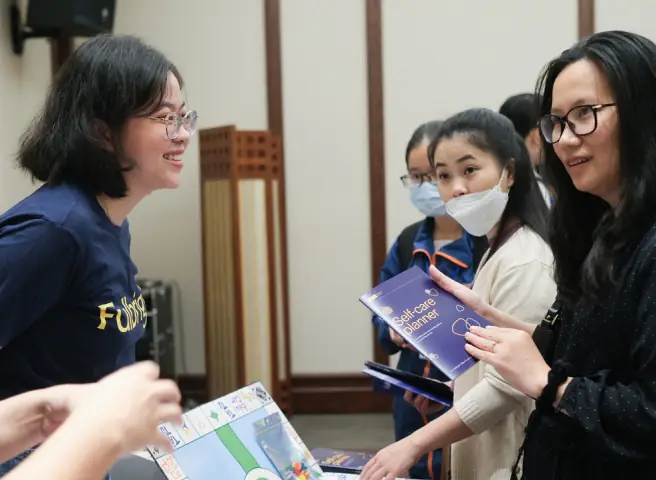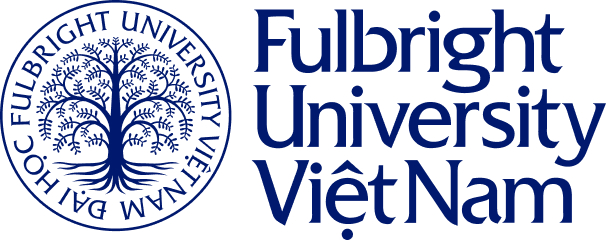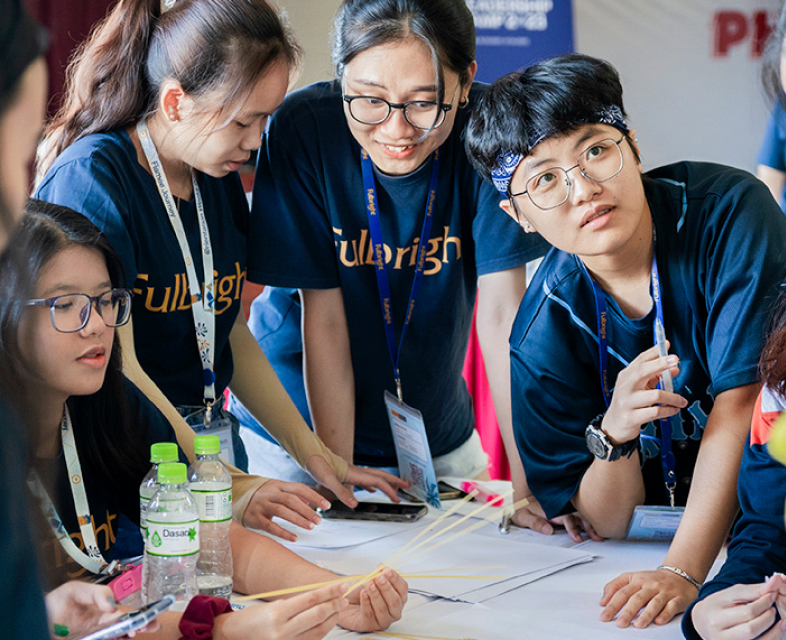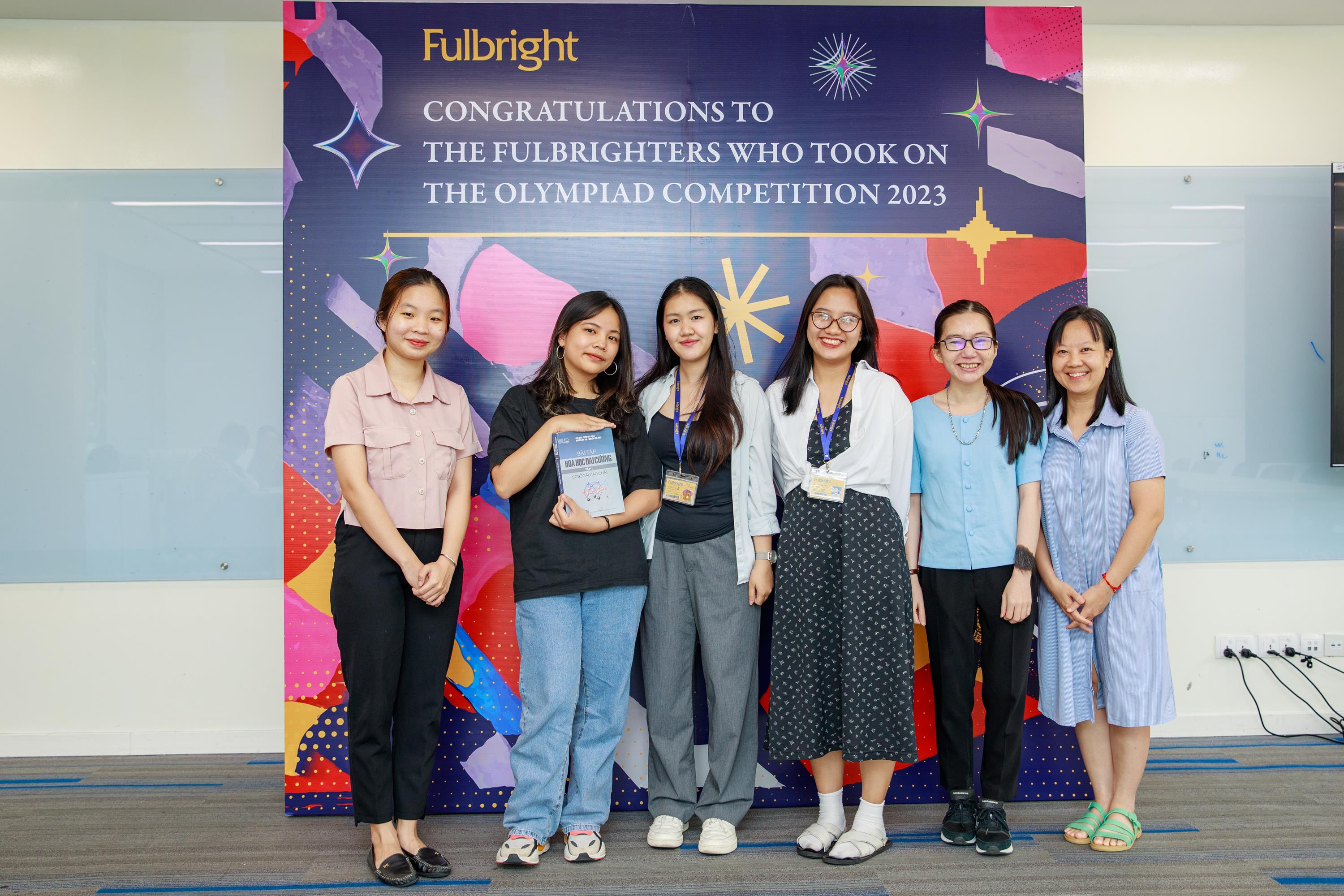
A heartfelt, inspirational story about Khang A Tua, the first ethnic student at Fulbright University was featured on Soha.vn, one of the most favourite online newspaper in Vietnam. This story has been prompting huge wave of positive reaction from Vietnamese public, with hundred thousands likes and shares on social media platforms.
Khang A Tua: Two million Vietnam Dong, a footbridge, and a peculiar journey to Fulbright University Vietnam of a H’Mong School-Dropout
Mu Cang Chai, the northernmost mountainous area in Vietnam is home to the world’s most beautiful rice terraces, luring millions of tourists to visit every year. Yet, Mu Cang Chai’s H’Mong ethnics* cannot seem to escape poverty. This story, however, is not about the H’Mongs and poverty. This is the story of a special boy who, many times, dropped out of school. Despite all that, with the support of his dad, a man who literally built a bridge for his son to get to school, Khang A Tua kept his hopes alive and thrived to escape his H’Mong’s ‘destiny’.
“Choosing a university is similar to choosing your spouse. To live happily ever after, you need to find a spouse who can complement you in all aspects, not one who is rich or beautiful.”
Khang A Tua, the only H’Mong student at Fulbright, said after ‘divorcing’ the Hanoi University of Science and Technology to ‘marry’ Fulbright University Vietnam.

The story of a four-timeschool dropout – the first H’Mong in Mu Cang Chai to make it to the Hanoi University of Science and Technology (HUST)
Khang A Tua became a student of Fulbright University Vietnam (Fulbright) when he was 25 years old – much older than his peers.
Prior to Fulbright,
Tua was the first H’Mong to get accepted to the prestigious HUST; he was the
pride of Mu Cang Chai. Yet, he decided to quit, realizing that he was
not happy there. At 25, Tua started his university journey again.
Tua’s hometown is in Mu Cang Chai – Yen Bai Province. From the Fulbright campus in Ho Chi Minh City, Tua needs to take a two-hour flight, drive another 300km from Hanoi to Mu Cang Chai district, and then take a small, bumpy road to Che Cu Nha Commune.
Though it’s a long journey, it’s worthwhile, especially for a four-time school dropout to make it as one of the 54 Co-Design Year students at FUV.
The first time Tua quit school was when he was in first grade, and still could not speak a word in Vietnamese. After taking a beating from his homeroom teacher, the 7-year-old Tua ran home in tears and refused to go back to school. He was so afraid. It was the first week of school.
A year went by; the 8-year-old Tua still did not want to go to school. Instead of forcing him, Tua’s dad gently looked him in the eyes and said: “You should go to school. You cannot be an illiterate peasant like me.”
On that first day of school, Tua’s dad took him by the hand and walked him through the rice terraces to go to class, which was situated at the foot of the mountain. As they walked, he confessed to his son: “I loved going to school, but I couldn’t finish first grade. That’s why I made a promise to myself that my children would have the chance I didn’t.”

Day by day, he took Tua to school and asked the teacher to let him stay in class with his son. After class, the father-and-son duo followed the trail of the rice terraces to go back home, all the way at the end of the mountain village. –
He went with Tua to school for a month straight, until one day Tua told him that school was not as scary as he thought, that not all teachers would give him a beating, and that his new homeroom teacher was so nice. Only then, the loving father felt comfortable enough to let Tua go to school by himself so that he could go back to earn a living.
“The Kinh
ethnics** like you must think that rice terraces are so beautiful, right?” ,–Tua
asked me when we were sitting face-to-face in Fulbright’s little library. “To
mountainous children like me, rice terraces are a nightmare. To get to class, I
had to cross the terraces’ borders, which were as wide as a span of a hand. On
those rainy days, the borders got so slippery that we could easily fall from
one terrace down to another. We got hurt, we cried, our clothes got all dirty,
and we still had to go to class. It was quite obvious that I, again, wanted to
quit school.”
This time, Tua’s father did not console him. Instead, he went into the forest every afternoon to pick up old timber. Little by little, he built this small footbridge by the terraces’ borders for Tua and his friends to hold on to on their way to school. Thanks to this footbridge, the children no longer fell down when it rained.
The third time Tua wanted to quit school was when life became too difficult to bear for his family. They had to move all the way into the forest. From his new home to school, Tua had to walk for hours.
Wanting to help Tua to continue his study, Tua’s mother decided to visit his teacher. It was an unusual discussion between a H’Mong mother who did not speak Vietnamese and a Kinh teacher who did not speak H’Mong language. The 10-year-old Tua, who spoke both Vietnamese and H’Mong languages, became the designated interpreter. That was how they discussed Tua’s future.
Eventually, the Kinh teacher decided to take Tua into her home.
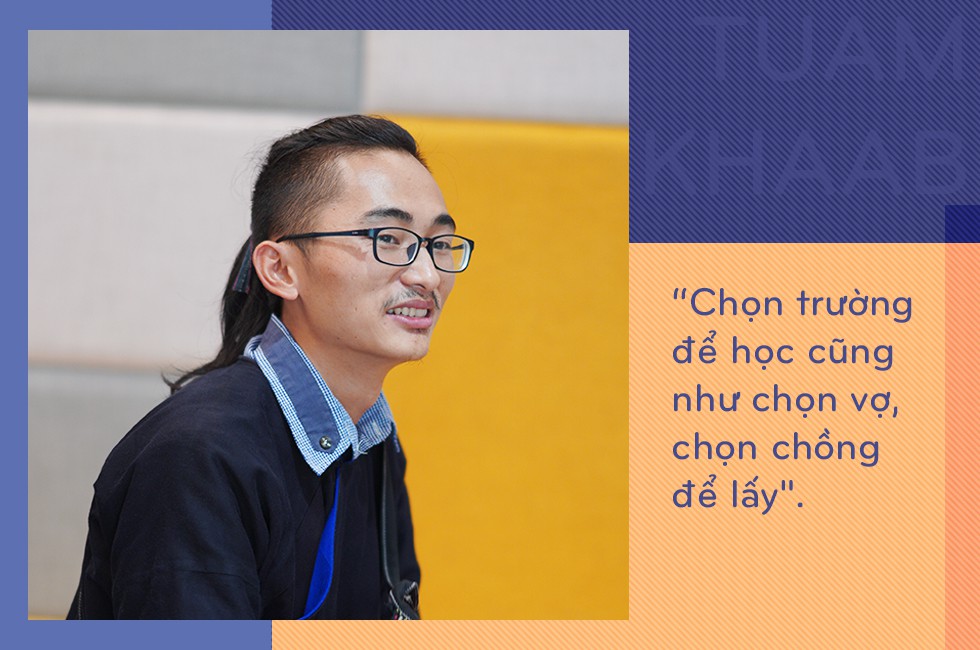
The chicken and egg problem, and the box of noodles that kept a poor H’Mong student alive in a big city
Tua was not born into a rich family, but he was born into a loving one.
Tua’s father worked in the deep, dark mines of Mu Cang Chai, where one downpour could easily take away many lives. During those rainy days, Tua remembered being haunted by the fear that his dad could lose his life at any moment in those dangerous mines. But Tua’s father is the type of man whowill go through great lengths to make sure his children can have food to eat, clothes to wear, and an education.
Tua was also fortunate to have a loving teacher, who didn’thave the heart to see a bright student lose an opportunity to go to school. She welcomed Tua into her family and provided him with a shelter and care.
Knowing how much his loved ones sacrificed for him, he strove to be in the top of the class, get top scores in the university entrance exam, and get accepted to the top universities in Vietnam.
That summer in 2014, Khang A Tua received an offer letter from HUST for a Chemistry major. Up until that point, Tua was the first H’Mong in Mu Cang Chai to get accepted to such a prestigious university as HUST.
The offer letter came two days before the first day of college. Such an imminent situation called for a swift and important decision. Tua and his dad needed to discuss how they could afford 4 years at HUST in Hanoi.
Tua’s family had a cardamom garden deep in the forest and a small rice field, which never yielded enough crops for a family of nine. They also had a small flock of 10 chickens.
Tua’s father said, “One hen can lay 15 eggs per month. We can sell each egg for 2,000 dongs. The tuition fee for HUST is five million dongs a year. Let’s say that our 10 chickens can lay eggs at the same time, and I still don’t have enough to afford your tuition. But you can never quit.”
After the talk, Tua’s father took out two million dongs in small, wrinkled bills. That was all he had saved throughout the course of his life. He told his son, “This is all I have. You take this money to settle down first. Then you need to find a way to take care of yourself.”
And that was how the young H’Mong man made his way down to Hanoi, with two million dongs in his pocket. He started school at HUST and did everything he could to earn a living.
“To save money, I only ate instant noodles. I bought boxes and boxes of them. Noticing that my friends in the dorm always bought these noodle packs from me to eat as midnight snacks, I began selling them at 3,500 dongs per pack. For each noodle box, I earned an extra 20,000 dongs. You have no idea how big that extra money was for me,” Tua shared.
Thanks to the valuable extra money, Tua survived his first year in college while still managing to save a couple million dongs to send home for his family.
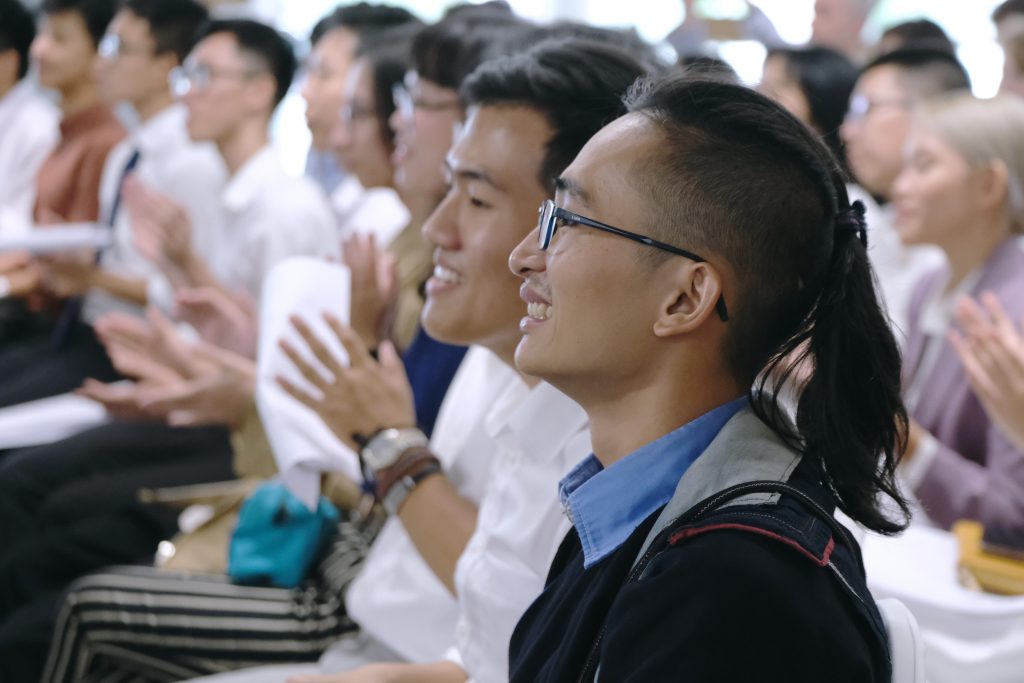
A romantic “marriage,” a quick “divorce” and surprising advice from a loving father
Tua
managed to financially support himself living in Hanoi. Yet, he could
not stop questioning his decision.
On his personal Facebook page, Khang A Tua shared, “Choosing the right university to attend is similar to choosing the right spouse to marry. To live happily ever after, we don’t need to choose a rich or a beautiful person.
Choosing the right university is the same. You want an institution that shares the same mission and the same values that you have; one that can provide the right environment and the right learning pathway that fits you. You shouldn’t pick a university just because of its reputation or ranking.”
Tua applied to HUST because there had not yet ever been any H’Mong in Mu Cang Chai who were accepted to this university. And Tua, at the time, only cared about the most popular universities and majors, not what he truly appreciated.
After a year at HUST, Tua soon realized that though this place was still prestigious, it was not the place for him. Tua preferred to be a teacher than a chemist, to get involve in social work than spend time in a lab. “It was like I got married to a beautiful, smart, and rich girl, but she and I don’t share any similarities,” Tua added.
In the end, after two years at HUST, Tua decided to get a “divorce,” “to end a romantic relationship, but full of miseries,” Tua confessed.
Tua decided to tell his dad his decision to quit school: “I quit HUST because I don’t think that they can give me what I want. This does not mean that I will quit learning. I’ll learn in the real world, in the social work I do, and one day, I’ll find a school that I really fit in.”
That day, Tua’s dad – a person who would do anything to give his son an education, who did everything to convince his son to go back to school, who sat there with his son in class to calm him down, who built a footbridge to help his son get to school safely through the rice terraces, who would do the most dangerous job in the world to pay for his son’s tuition – simply said, “You are free to learn whichever way you want and follow what you think is the right thing to do…”
After listening to his dad’s advice, Tua, the first H’Mong in Mu Cang Chai who got into HUST, dropped out of HUST.

Applying to Fulbright using Google Translate and the one factor to win over the Admissions Council
After HUST, Khang A Tua and his H’Mong friends founded the “Action for H’Mong’s Development” project.
In order to take care of himself, Tua worked part-time in many different restaurants. During his free time, he searched for different H’Mong’s folk tales, collected them and printed them into books, in both H’Mong and Vietnamese languages. He sent these books to the schools in the mountainous areas, hoping the teachers there would use these tales to teach H’Mong children. He also partnered with non-governmental organizations such as ISEE in different projects to support his H’Mong community.
By chance, an Admission Officer at Fulbright University Vietnam met him at one of those social projects. Inspired by his story, she encouraged him to apply to Fulbright.
“Fulbright is not only looking for the best, the most capable candidates, but also the “gems in the rough” – those in whom we can see the potential and the willingness to thrive,” Dam Bich Thuy, Fulbright President, shared with me in one of my interviews with her.
And at Fulbright, it is not difficult to see that Khang A Tua is the gem in the rough, simple but full of sharp edges. Tua applied to Fulbright using the English he learned from the Western tourists when working at the restaurants.
“To write the essay in the application, I used Google Translate,” Tua confessed. His honesty caught me by surprise, and I couldn’t help but laugh. Throughout my years working as a journalist, that answer was one that I couldn’t anticipate.
When Tua was chosen to participate in Fulbright’s group interview round with many other students from different parts of the country, he came in with courage and optimism.
“When the professors and the Admissions staff asked me questions in English, I couldn’t make sense of what they were asking, let alone answer them. I decided to answer them in Vietnamese, and the other candidates helped me translate my answers into English. I was so moved. I was their competitor; they could have chosen not to help me to increase their chance of getting in. But they didn’t do that. I knew then that I wanted to learn alongside these friends, in such an inclusive learning environment.”

That day, the Admissions Council asked:
- If you were to design a new course in the Co-Design Year, what would you design?
Tua answered:
- I want to design a course on the indigenous culture.
Tua’s case received mixed reviews from the Admissions Council. Those who were against his case were concerned about his English ability, and the 5-year age gap between him and the rest, which would hinder inclusivity. Those who fought for Tua believed that he was the diamond in the rough that Fulbright could refine.
Eventually, Tua was accepted. In his offer letter, Fulbright’s Admissions Council clearly stated: “Tua is chosen for his convincing story and for possessing all the characteristics that Fulbright is looking for in our co-design students. These characteristics are intellectual curiosity, pioneering, and community-focused.”
Fulbright also offered Tua a spot in the Bridge Program, which provided language and learning support prior to starting the undergraduate program.

The guilt of falling behind, the embarrassing moments, and the awakening advice from a professor
Becoming a
Fulbright student, Khang A Tua received a lot of attention for being the first
H’Mong at Fulbright. Everyone was curious about him. They all looked for a happy –ending for H’Mong ethnic in him.
But it is not my intention to portray Tua as a hero. The truth is Tua’s first year at Fulbright was not at all a well-trodden path.
Even after spending seven weeks to attend the Bridge Program in the summer, Tua still struggled with the Co-Design Year, which was taught entirely in English.
There were days that he couldn’t understand one-fifth of what the professors were talking about. It took him three times longer than his peers to do homework.
When he was at HUST, at one point he couldn’t meet the academic requirements, which resulted in his scholarship being revoked. It was embarrassing for him. He felt as though history repeated itself.
Tua shared, “Knowing that nothing in life comes easy, yet there were times that I was full of this guilt and shame for falling behind. I confided in my professor and he told me this, “You should not compare yourself to anyone else. You just need to know that the you today are better than the you yesterday.””
That advice helped Tua get over his fear and become more confident in class, ready to ask questions or raise new ideas.
“My first essay was red with markings from my Rhetoric professor. Now, the markings are less and less. I remember having to pretend to be strong when I was younger. Now, I learn to laugh when I’m happy and cry when I’m sad. I learn to become a better version of myself every day.”
On March 25, 2019, Tua received his own Fulbright business card. On the card, it says, “Khang A Tua/ Co-Design Year Student.” Coincidentally, three years ago, on this very same day of March 25th, Tua left HUST.
Tua treasures this business card because it reminds him of his lost twenty-year-old self. But today, Tua is starting his first academic year at Fulbright, after the Co-Design Year. After “divorcing” the beautiful HUST, Tua is now happy with his new “marriage” with Fulbright.


The question about a mole, the fear, and the H’Mong dream
At Fulbright, Tua is easily recognized because of the signature H’Mong ponytail and the ethnic clothes, which his mom spent a whole year making, patiently sewing one thread after another.
“I don’t want to forget who I am and where I am from,” Tua explained.
When he was in 10th grade, because of his excellent academic record, he got a scholarship to Viet Bac boarding school in Thai Nguyen province. At school, he wore Kinh clothes and slowly, he forgot his H’Mong language. One day, he noticed that there was this tiny mole on his hand. Not knowing what it was called in H’Mong language, he went home to ask his mom. But Tua’s mom, being a H’Mong mother who couldn’t speak a single word in Vietnamese, could not understand her son, a H’Mong who slowly forgot his own language.
“I am slowly losing the valuable connection I have with the people I love, with those whom I hold dear,” Tua admitted.
After that day, Tua returned to school to ask the person who was most fluent in H’Mong language to teach him how to speak and write in H’Mong. Then Tua started wearing H’Mong’s traditional clothes to school, and has been wearing them since, to remind him not to forget his roots again.
Tua carries in him lots of hopes, dreams and concerns for the H’Mong ethnics and his family, and what the best way is to educate the H’Mong people to help them escape poverty. Perhaps that is the reason why Tua was chosen to become one of Fulbright’s Co-Design Year students, to “co-design” history and the future of this university.
Tua said: “I don’t like how the Kinh people do charity in the mountainous area. Giving these people clothes, food, and money only makes them take it for granted. One hundred years ago, the H’Mong were known to be self-sustaining. Now, my people rely on the aid from the Kinh people, waiting to receive everything from fertilizers to rice crops, and still cannot produce enough food to eat.

I don’t think they need to build more schools in the mountainous areas. I think there are enough schools. What we need to build is the curriculums and to train the teachers. I don’t understand how teachers who don’t know H’Mong language or H’Mong culture, or don’t love H’Mong children, can teach in areas like my hometown.
I don’t understand why a H’Mong child needs to learn Kinh’s folk tales, language, and writing on the first day of school when he or she doesn’t even speak a word in Kinh’s language. Many H’Mong children cannot survive this challenge, because they cannot understand what is taught in class. And one generation after another, the H’Mong people continue living in poverty and illiteracy.
So when I was offered the opportunity to “co-design” the curriculum and the learning environment at Fulbright, I hoped I could learn from such a process so that one day, I can help “co-design” a curriculum that is suitable for the H’Mong people.”
Last summer, Tua spent all the money he saved to buy a budget flight ticket to go to Hanoi. With only 14,000 dongs left in his pocket, Tua borrowed a bike from a friend to work as a Grab driver in the evening. During the day, he worked on his “Vuon Mo” (Garden of Dreams) project, which brought H’Mong children to the city to teach them about the city life.
Also last summer, Tua founded the Facebook fan page “Na Na,” which means “Mother, Mother” in H’Mong language. The page is created so that H’Mong mothers like Tua’s have a place to sell the products they make or their harvest; these can range from a few litters of honey to some H’Mong ethnic shirts. The page also represents the hope that the H’Mong mothers who cannot speak Vietnamese can still communicate with the Kinhs, do business with the Kinhs, and make money like the Kinhs do.

“You only know how hard a job is until you do it,” Tua said. “Now I understand that to change my community, I first need to change the mindset of my family members. These people will change the mindsets of 5 to 7 others. And the impact continues.”
Tua’s name in H’Mong language means “changes and turning-points.” Coincidentally, Tua continues facing changes and turning-points to this day.
Today, at Fulbright, Tua still needs to face the challenge to support himself through four years of college. Tua struggles to find ways to save from his financial aid, which is only barely enough for him, to help his parents send six other siblings to school. While his friend eats one chicken drumstick per meal, Tua divides his one drumstick into three pieces.
I don’t know what Tua will achieve in the next 4 years, after graduating from Fulbright at 30 years old. But I share his story today because it is beautiful and inspiring, with the hope that his dreams will soon come to life.
By Tô Lan Hương
* H’Mong ethnic is one among 53 ethnic minority groups in Vietnam. They belong to the group of extreme poor in Vietnam (measured using a national extreme poverty line).
** Kinh ethnic is the main ethnic group in Vietnam, accounting for 86.2% of Vietnam population.


